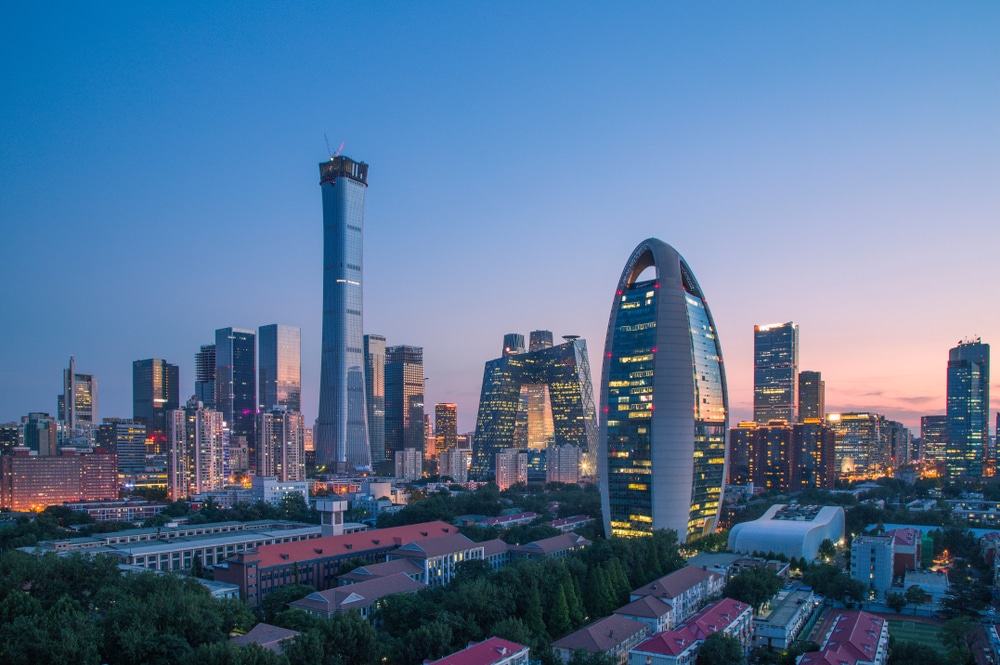The capital of China can look back on a 3000-year history. Beijing, as Beijing is now increasingly called in Germany, is a metropolis of superlatives. With more than 21 million inhabitants, it is among the top 10 largest cities in the world. Traditional temple complexes, impressive garden architecture and a large number of world cultural sites attract several million visitors every year.
The most famous sights in Beijing
Viewpoints
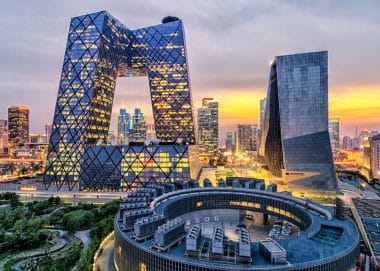
During the first visit, it is a good idea to first look at Beijing from above. One of the best observation decks is located in the China World Trade Center Tower III.
At 330 meters, it is the tallest building in the city. The 405-meter-high television tower is also open to tourists. If you want to see the Forbidden City from a different perspective, you should go to the observation hill of Jingshan Park . It can be climbed in just ten minutes and offers a unique view of the many sights.
The new Summer Palace in Beijing
When it used to get too hot in Beijing in the summer, the emperors retreated to the new summer palace . This was built between 1751 and 1764 under Emperor Qianlong and was considered a birthday present for his mother. The associated park is one of the largest in China. More than half of the site is occupied by Lake Kunming , which was once excavated by 100,000 workers. Since 1998, the new Summer Palace has been a UNESCO World Heritage Site.
The Forbidden City
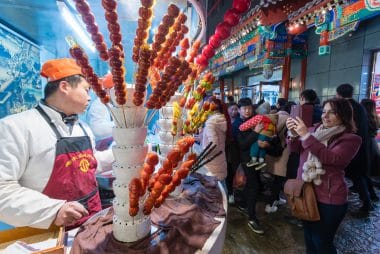
In 1406, the construction of the largest palace complex in the world was initiated by the then Emperor Yongle. It comprises 890 palaces, including the Imperial Palace. Until 1911, the Chinese rulers ruled there. The Forbidden City got its name from the fact that it was not allowed to be entered by ordinary citizens. In 1987 it was named a UNESCO World Heritage Site.
On the 720,000 square meter site, the unique architectural achievement of the ancient Chinese can be admired today.
Tiananmen Square
Not far from the Forbidden City is Tiananmen Square, better known as Tiananmen Square. It was here that the founding of the People’s Republic of China was announced in 1949 by the politician Mao Zedong. He is honored with a portrait above the Gate of Tiananmen.
Tiananmen Square can accommodate more than a million people, which is why it is considered the world’s largest gathering place .
The Great Wall of China
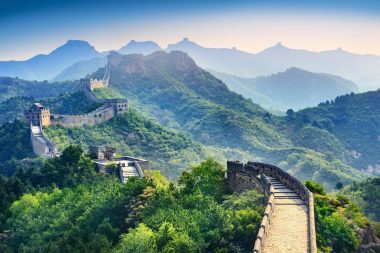
From Beijing, the largest wall in the world can be reached within 1.5 hours by car. The Mutianyu section there is the longest part of the wall that has been completely restored.
As early as the 7th century BC. The Great Wall of China was built – originally to protect the population from attackers. It runs over more than 21,000 kilometers. In 2007, it was named one of the New Seven Wonders of the World.
Beijing – The Olympic City
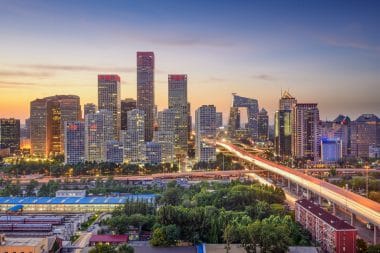
In 2008, Beijing was the venue for the Summer Olympics. The Olympic City built for this purpose is now considered a famous sightseeing spot.
The national stadium, where the opening and closing ceremonies as well as the athletics competitions took place, shines with its impressive architecture. Due to the many steel girders, the arena, designed by a Swiss architect, is called the “Bird’s Nest”.
The swimming centre opposite is not only visually impressive, but also environmentally advanced. Almost 100 percent of the incident sun’s rays can be used to heat the pools. Today it is used as a public swimming pool.
Oases of peace in the metropolis of Beijing
Jingshan Park
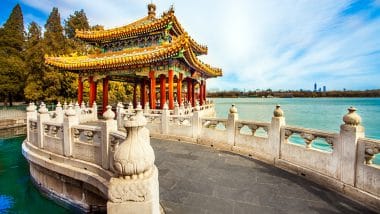
Near the Forbidden City is the 23-hectare
Jingshan Park
. In the past, it served the emperors as an amusement park. Nowadays, it attracts tourists especially because of the lookout hill, from where they can enjoy a spectacular view of the city.
Beihai Park
Relaxation can be found above all in Beihai Park. Rowing boats are available for rent at the lake there and the White Pagoda on Jade Island is also worth a visit. In addition, in the park from 1179 you can visit the Bridge of Eternal Peace, the Studio of the Quiet Heart and the Temple of Eternal Rest.
Temple complexes in Beijing
The Temple of Heaven
Another attraction that has been designated a World Heritage Site by UNESCO is the Temple of Heaven. In its “Hall of Harvest Offerings”, the emperors once prayed for a good harvest.
The Echo Wall is also interesting for visitors. Due to its smooth surface and circular shape, sound waves can be transmitted along it. All visitors can communicate with each other – regardless of their position on the wall.
The Lama Temple
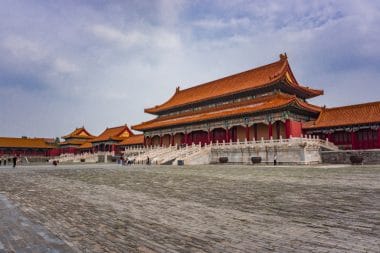
The original prince’s residence was converted into today’s
Lama Temple
in 1744. It became the most visited religious site in Beijing. In the Hall of Infinite Happiness is the real highlight: the largest Buddha statue made from just one sandalwood tree. The unique temple architecture and the many halls with Chinese cultural treasures invite you to linger for hours.
Special features in Beijing
The Hutongs
The hutongs in Beijing show part of the city’s ancient history, but always have to give way due to modernization. In these narrow streets and courtyards, the everyday life of the inhabitants used to take place. They cooked and met with friends. In today’s world, the traditional life of the Chinese can still be observed sporadically.
Visitors and residents alike appreciate the peaceful and familiar atmosphere of the area. Cars are hardly seen here, which is why a walk is particularly recommended.
Beijing Opera
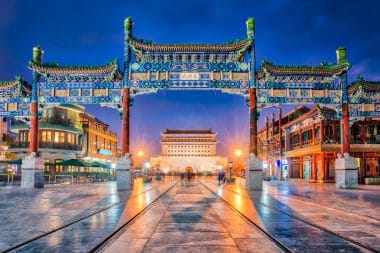
Another special feature is the Beijing Opera House, which was created 200 years ago. Various types of performances such as dance, singing, acrobatics and martial arts have always been accessible to every inhabitant and not reserved only for the emperors. As a result, it became very popular and is now considered the highest Chinese art form. Stories from the Ming and Qing dynasties are often performed. In 2010, it was declared an intangible cultural heritage by UNESCO.
Culinary specialties
Two dishes should not be missing from a visit to the Chinese capital: Peking duck and huoguo. The Peking duck is served classically in three courses. First, the duck skin is eaten with garlic. The main course is the tender meat rolled in pancakes and finally a soup made from the bones and meat scraps is consumed. The huoguo is a dish in which, among other things, fish, vegetables and thin slices of meat are cooked in a hot pot and eaten with a variety of sauces.
Facts about Beijing
- Size: Beijing is a sprawling metropolis that covers an area of about 16,410 square kilometers. The city is divided into several districts, ranging from densely populated urban centers to large rural areas.
- Population: With a population of over 21 million people, Beijing is one of the most populous cities in the world. The city is a melting pot of different cultures and ethnicities, making it a diverse and dynamic place.
- Language: The main language in Beijing is Mandarin, which is also known as Putonghua due to its use as a standard language in the media and education. It is the most widely spoken language in all of China and plays a central role in Chinese society.
- Historical significance: Beijing is a city with over 3,000 years of history and has been the capital of various Chinese dynasties since the 13th century. The city is rich in historical sites, including the Forbidden City, which was the political center of China for over 500 years and is now protected as a UNESCO World Heritage Site.
- Modern architecture and Olympic Games: Beijing is also known for its impressive modern architecture, such as the Bird’s Nest (National Stadium), the Water Cube (National Aquatics Center), and the CCTV Tower. The city hosted the 2008 Summer Olympics, an event that produced numerous modern architectural masterpieces.
- Cultural Center: Beijing is the cultural heart of China, with a variety of museums, galleries, theaters, and traditional Chinese temples and gardens. Annual events such as the Spring Festival and the Moon Festival attract visitors from all over the world.
- Economic power: As the political, educational and cultural center of China, Beijing is also an important international financial center. It is home to many state-owned companies and, increasingly, international companies.
- Culinary diversity: Beijing’s culinary scene is diverse, ranging from traditional Peking duck to international haute cuisine. Street markets and food stalls offer a variety of local delicacies that show the depth of Chinese cuisine.


